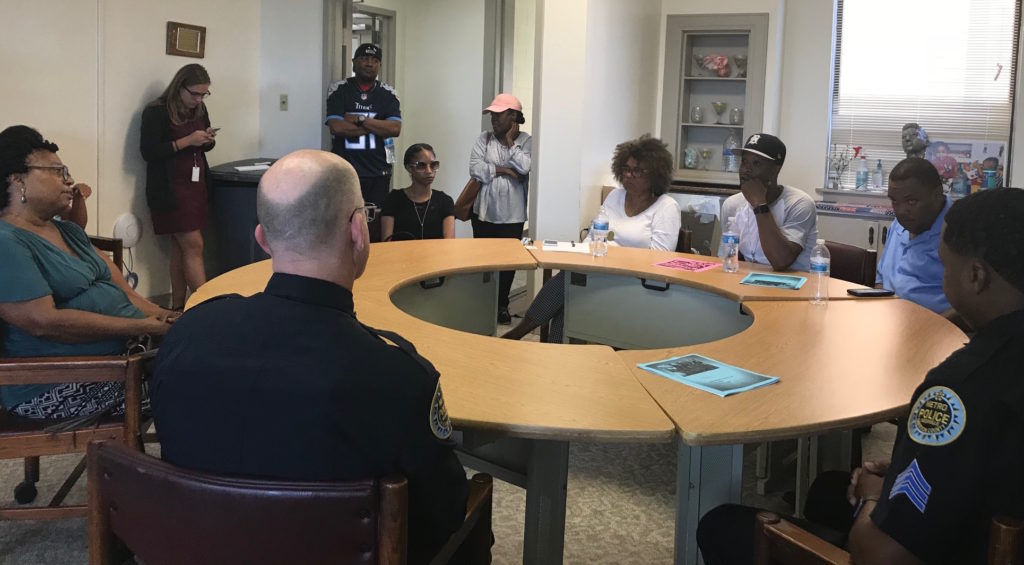
Less than 24 hours after a black man was fatally shot by a Metro Police officer in North Nashville, community members, police and city officials gathered to discuss the incident.
But the police had little to say. That’s because they are not the ones in charge of investigating this shooting; the Tennessee Bureau of Investigation is.
“What probably as residents and us as a police department both want in the end is the truth,” said Deputy Chief of Police, Brian Johnson, who attended the two-hour meeting along with two other officers. “We have to let the facts take us to the truth,” he added. “Unfortunately, right now I don’t have all the facts.”
The TBI is leading the investigation rather than Metro Police because of an agreement dictating the state’s top law enforcement agency take over after any Metro officer fatally shoots someone. The agreement has been in place since 2017, after a Nashville police officer
fatally shot a man in East Nashville. This is the first fatal police shooting that the TBI has been
in charge of from the very beginning.
But that hasn’t stopped neighbors and community members from pressing Metro Police for information. Like whether the victim, 25-year-old Daniel Hambrick, was carrying a gun when he was fatally shot by officer Andrew Delke, also 25. And what the surveillance camera footage shows of the incident.
According to the TBI, who was not at the meeting but
has reviewed the surveillance footage, it seems to show Hambrick getting out of the car and running from Delke with a “dark-colored object in his hand.” The TBI says agents later recovered a handgun at the scene.
But it’s not yet clear whether the gun belonged to Hambrick, or if he had it on him when Delke opened fire several times. The TBI says it’s also trying to figure out what led Delke to shoot.
“Nobody wants an uproar, but people are angry. People are mad,” said Michael Jordan, the Resident Association President at John Henry Hale, the subsidized housing complex where the shooting occurred. The community meeting took place across the street from the complex, at Bethlehem Centers of Nashville.
Jackie Sims, who lives around the corner from where the shooting took place and is also a member of Community Oversight Now, a group of activists that have lobbied for police reforms, said she’d been hearing from neighbors all day. “People are disturbed, they are angry, they are hurt,” Sims said. “So I want to know what happened.”
One question that has been asked repeatedly since the shooting took place is why officers handcuffed Hambrick after he’d been shot and on the ground. This one, Deputy Chief Johnson could answer.
“For us the hands present the greatest threat,” Johnson said. “We want to see people’s hands because if we see nothing is in them we can begin to deescalate the situation. So in this case handcuffing was absolutely appropriate.”
Gretchen Perkins, a resident of John Henry Hale, said she witnessed the shooting. At the meeting she confronted Johnson about what she believed was aggressive behavior by law enforcement. She says that after Hambrick was shot and on the ground, another officer approached holding a rifle, pointing it at Hambrick. Perkins said she felt the move was unnecessary, since Hambrick was already shot and on the ground.
“If I am holding a rifle like that what would you assume?” she said to Johnson, explaining how threatening it felt.
“We are trained to hold our weapons a certain way,” Johnson said.
“I guess we can agree to disagree,” Perkins said.


